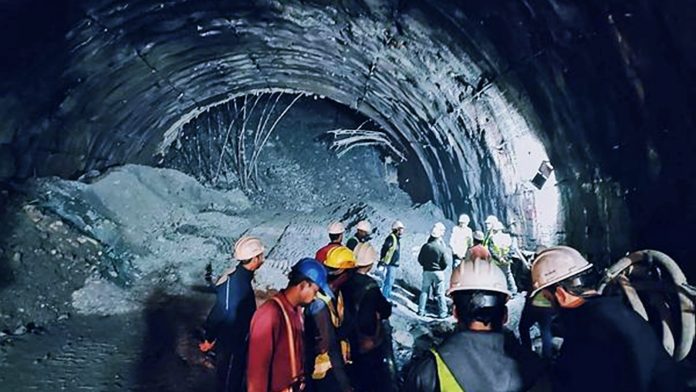- The entire nation was glued to the news channels over the last seventeen days partaking in what was happening around the trapped labourers working in the construction of a 4.5 km motorable Silkyara tunnel that collapsed in Uttarakhand. Mercifully, the countrymen’s collective prayers are answered with the safe evacuation of the trapped laborer after an excruciating wait. The amount of anxiety, tension, sense of foreboding, and despondency suffered by the laborers and their families cannot be explained in simple terms. The episode rightfully deserved extensive coverage prompting no less than the Prime Minister’s Office to intervene and monitor the evacuation efforts undertaken by various disaster management agencies.

PC: The Week
- Not a life lost during the stressful fortnight must come as a great relief to all concerned authorities as well as family members. Due credit should accrue to those multiagency rescue teams, capped by the heroic final act from rat-hole miners, which eventually brought out the trapped workers safely. As you are aware, for a country that tends to ignore project safety, the price of which is paid by workers, it was a rare occasion when no one gave up on the workers trapped in the tunnel. As such, the rescue efforts make Silkyara memorable on more than one front. Needless to mention, the task was daunting, with rescue teams having to dig through 57 meters of debris. Of this, the last 12 meters required manual clearing.
- Indeed, over the 17 days of rescue efforts, a highlight was the way different agencies pitched in. Other than NDRF and its state counterpart who were at the forefront, five other agencies, including ONGC, were also part of the rescue efforts. The army lent the services of the Madras Sappers, an arm of its corps of engineers. The rescue efforts did not hesitate to tap into foreign expertise or even the basic approach of rat-hole miners, who are now banned from extracting minerals using this technique. A notable aspect of the multiagency rescue effort was the seamless coordination. Once the emotions over the rescue efforts settle, it’s important to ask pertinent questions about the risk assessment of the Chardham Mahamarg Pariyojana (CMP).

PC: The Indian Express
- At a local level, workers in the Silkyara-Barkot tunnel were exposed to high risk because there was no escape route in case of an accident. Of course, this violates safety norms. CMP sidestepped the overall environmental impact assessment by breaking down the project into separate segments, each of which was below a threshold of 100 km. This helped CMP begin building an all-weather road in one of India’s most seismically active and fragile zones without adequate risk assessment. Agreed, India needs a massive infrastructure upgrade. But to view projects through the lens of development versus environment is false. The core issue must be about the cost-benefit analysis that factors in risks. CMP aims to ensure safe access to key nodes. Thus, ignoring environmental risks will defeat the purpose. This should not be ignored anymore.






